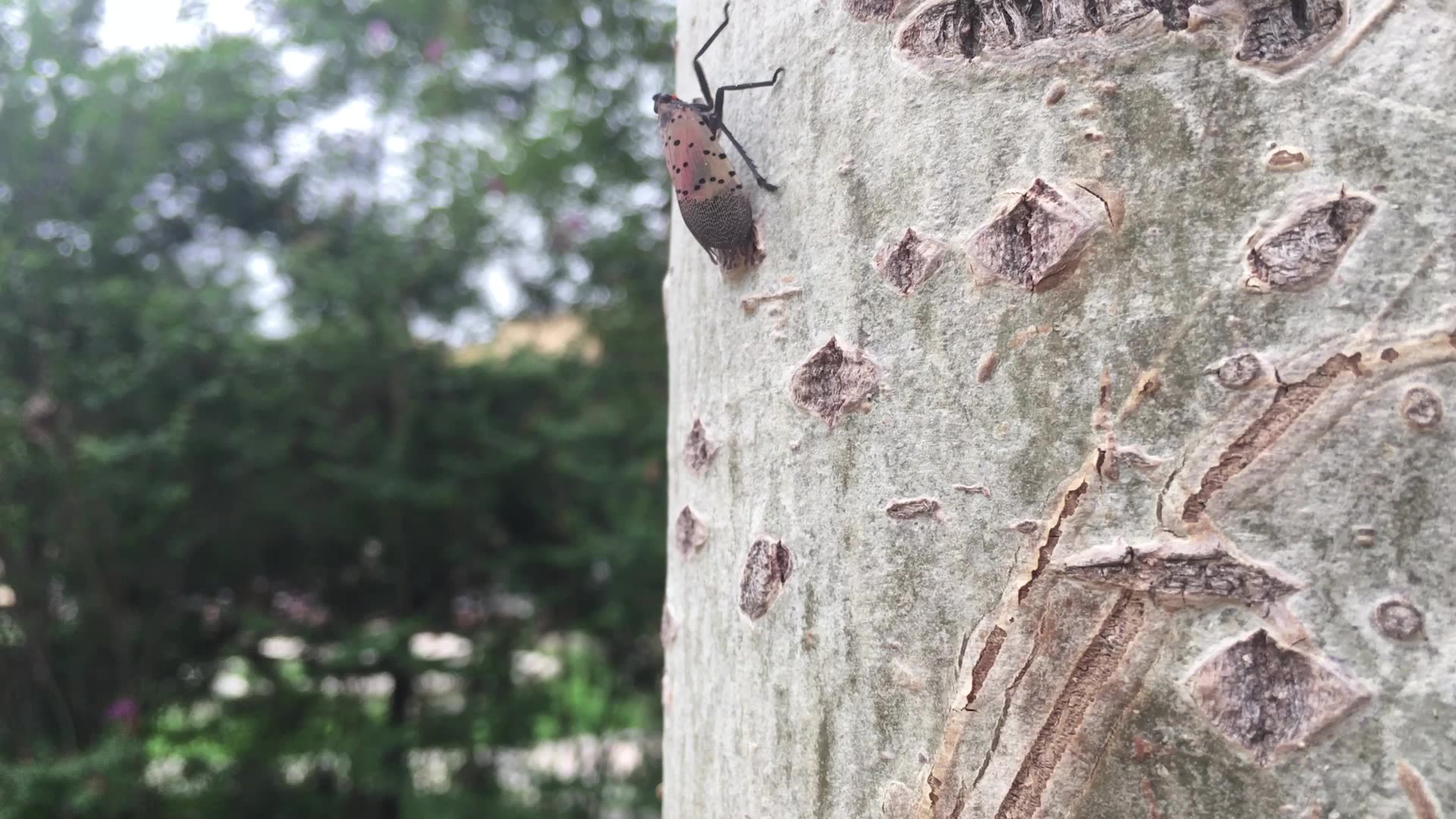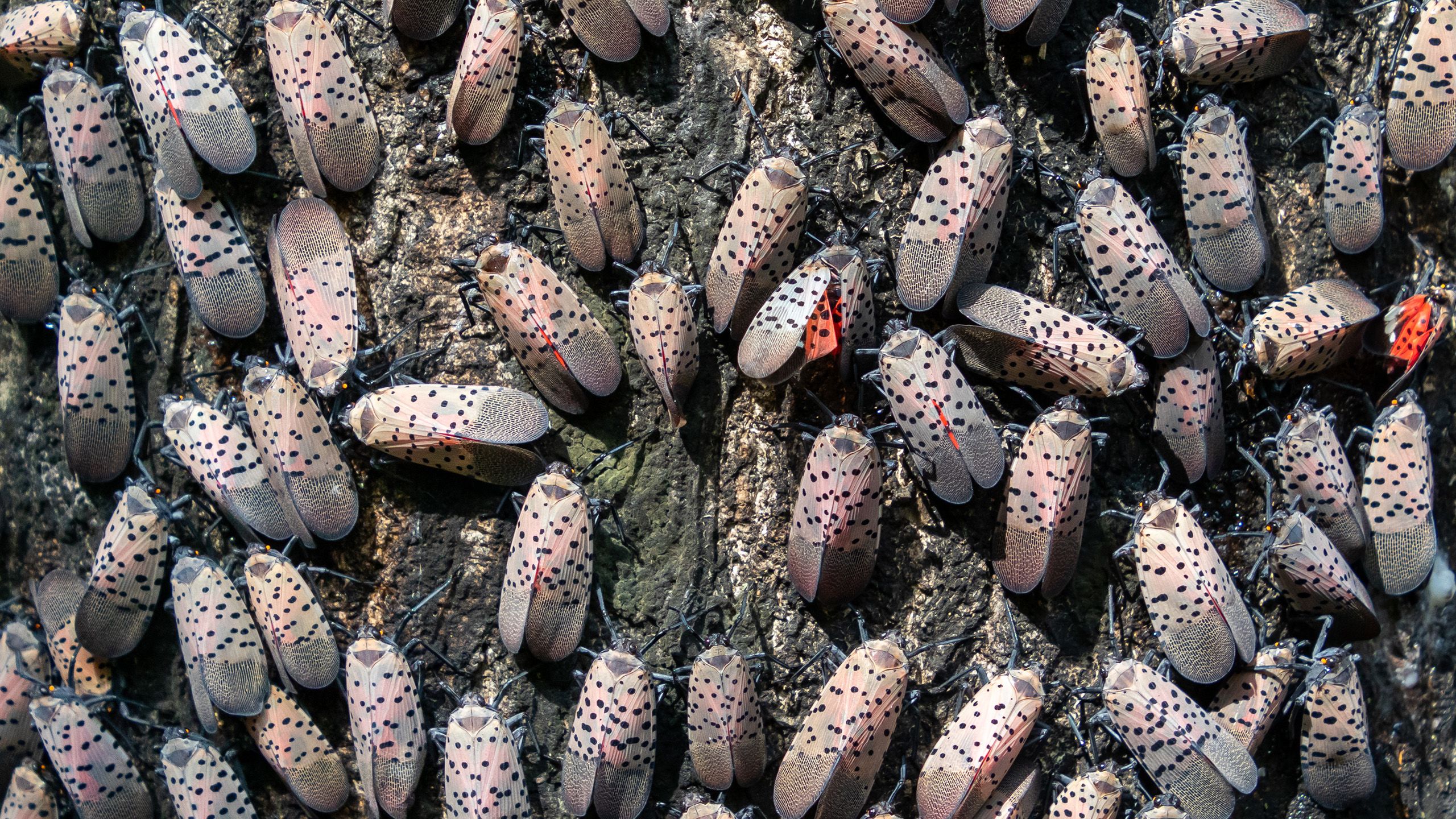A Serious Pest
Biologist shares insights on the invasive spotted lanternfly

The spotted lanternfly, native to Asia and first discovered in New Jersey in 2018, is a prolific pest. It moves in such large numbers that sightings of thousands in one tree are not uncommon. The lanternfly poses no threat to humans or pets, but its insatiable appetite for the sap of plants and trees can weaken and possibly kill important crops and vegetation. Amy Savage, who studies urban ecosystems in the Rutgers University in Camden College of Arts and Sciences, said the insect has impacted urban habitats just as much as suburban and rural spaces.
“There are two key findings that are relevant to urban systems,” said Savage, an assistant professor in the Department of Biology. “Many of the plants that spotted lanternflies feed on, including black walnut and silver maple, are common in urban spaces. Also, the spread of the spotted lanternfly is strongly linked to human population density. This last point is particularly concerning in New Jersey, since it is the most densely populated state in the United States.''

Amy Savage, assistant professor in the department of biology
Amy Savage, assistant professor in the department of biology

Another reason for the spotted lanternfly’s rapid spread is its wide and varied diet. While the Tree of Heaven is the bug’s first choice, more than 70 plant species have been confirmed as spotted lanternfly food sources. The bug feasts on plant sap to get the nutritional protein it needs, leaving behind a sugary substance called honeydew to rid itself of carbohydrates. The sheer amount of spotted lanternflies and honeydew production make for a one-two ecological punch.
“The spotted lanternflies occur in dense colonies and produce so much honeydew that sooty mold grows on the sticky honeydew left on the surfaces of plant leaves,” Savage said. “The growth of this fungus reduces plants’ abilities to photosynthesize, leading to plant death in extreme cases.” Sooty mold can coat other non-plant surfaces such as patio furniture, decks, and cars.
Research on the spotted lanternfly is still relatively new. For example, early studies were heavily focused on the economic and ecological impact of invasion on grapevines. Savage noted studies have concluded there is no connection between lanternfly infestation and the spread of plant pathogens. She did point out, however, that researchers are currently determining the potential effects of increased pesticide use on infested grapevines.


A spotted lanternfly standing in a natural surrounding.
A spotted lanternfly standing in a natural surrounding.
“It is unclear if the increased pesticide is actually having negative effects on lanternfly populations,” Savage said. “This is an active area of research and more detailed studies of the physiological effects of pesticides and spotted lanternfly on grapevines will likely help us get more clarity regarding this question.”
Savage said there are no best practices yet for spotted lanternfly prevention. City dwellers and forest bathers may continue to stomp adult bugs, which can prevent egg laying; it’s even better to destroy egg masses. However, more advancements are being made in large-scale control measures.
“Most of the current control is based on chemical pesticides,” Savage said. “Unfortunately, the pesticides that have been shown to be most effective also have toxic effects on other species and ecosystem processes. Ultimately, mechanical removal is not the most effective control measure, and chemical means of control are still being studied.”

Creative Design: Karaamat Abdullah